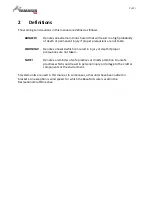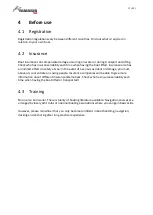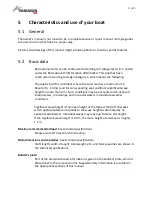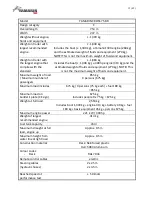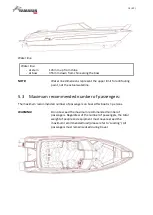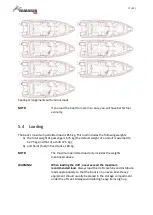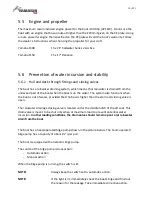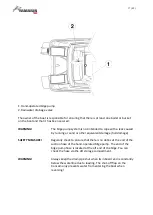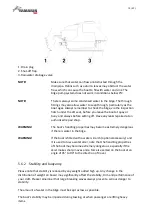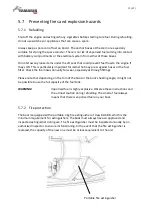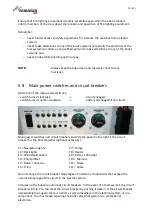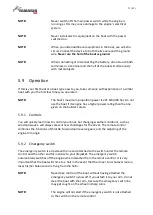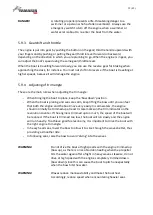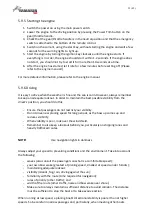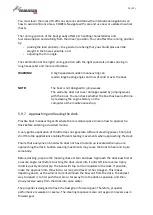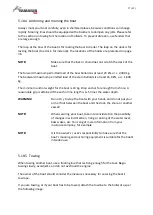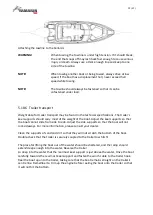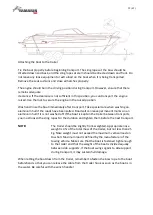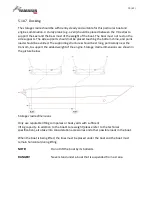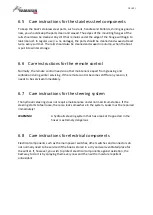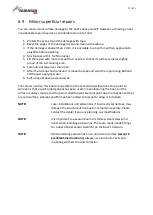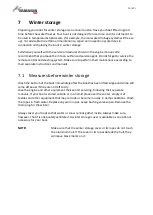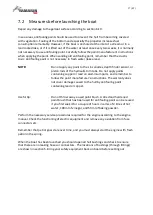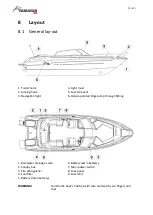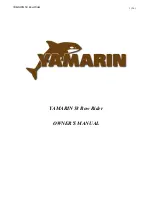
23 (42)
5.9.5
Starting the engine
1.
Switch the power on using the main power switch.
2.
Lower the engine to the driving position by pressing the Power Trim button on the
gear/throttle handle.
3.
Check that the gear/throttle handle is in the neutral position and that the emergency
switch is attached to the bottom of the remote control.
4.
Switch on the current, using the start key, without starting the engine and wait a few
seconds for the warning lights to light up.
5.
Start the engine by turning the ignition key clockwise until the engine starts. If
everything is in order, the engine should start within 1-2 seconds. If the engine does
not start, you should not try to start it for more than 10 seconds at a time.
6.
After the engine has started, let it idle for a few minutes before setting off. (Please
refer to the engine manual!)
For more detailed information, please refer to the engine manual.
5.9.6
Driving
It is easy to drive when the weather is fine and the sea is calm. However, always remember
to keep an adequate lookout. In order to maintain the best possible visibility from the
driver’s position, you should do this
:
-
Ensure that passengers do not restrict your visibility.
-
Do not drive near planing speed for long periods, as the bow up comes up and
reduces visibility.
-
When visibility is poor, look over the windshield.
-
Remember to also keep a lookout behind you, particularly on shipping lanes and
heavily trafficked routes.
NOTE!
Use navigation lights in darkness.
Always adjust your speed to prevailing conditions and the environment. Take into account
the following:
-
waves (also consult the passengers on what is a comfortable speed);
-
your own bow wake (greatest at planing speed, smallest at speeds under 5 knots);
-
maintaining adequate lookout;
-
visibility (islands, fog, rain, driving against the sun);
-
familiarity with the route (time required for navigation);
-
rules of priority (other traffic); and
-
width of the route (other traffic, noise and bow wake near shore).
-
Make sure to always maintain a sufficient distance to avoid collision. The distance
must be sufficient to stop the boat or to take evasive action.
When running at low speed, a planing boat's directional stability is poorer than at higher
speeds. So be careful in narrow passages and, particularly, when meeting other boats.
Summary of Contents for Cross 75 Bow Rider
Page 1: ...Yamarin Cross 75 Bow Rider User manual...
Page 41: ...41 42 8 5 Wiring diagram...
Page 42: ...42 42...

